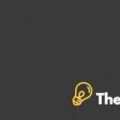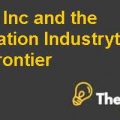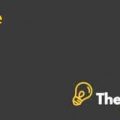
INTRODUCTION
Aegis Analytical Corporation was established in the year 1995 and it is a leading provider of consulting services and software on the production process of pharmaceutical manufacturers and bio-technology. In the year 2002, the top management of the company decided to change the focus of the company, which originally focused on development into sales and marketing. The changes are then pushed the company to establish strategic alliances.
In order to increase its sales, Aegis has made an alliance with two major companies Honeywell and Rockwell. Both of these companies are engaged in the field of systems and software for the pharmaceutical industry and bio-technology. However, after one year, this alliance did not generate any product sales of Aegis. Therefore, the question arises of the top management regarding the success of the alliance strategy and how their decisions are further on the matter. Does it provide a chance to see the success of the alliance that has been done, restructured or even terminate the contract alliances on one or both of the alliance?
STRATEGIC ALLIANCES:
The strategic alliance is a corporate action in which two or more companies cooperate in aspects of development, production, or sale of products or services. Strategic alliances can be classified into three categories namely: alliances without equity, with equity alliances, and joint ventures. There are three common reasons why companies do strategic alliances such as:
v To improve the performance of their current business operations.
v To create a competitive environment that is favorable to the company
v To facilitate exit and entry in the market or industry.
In this case, Aegis alliances in the form of alliances without equity. Aegis alliances is based on either contract with Honeywell and Rockwell. In addition, the main reason that pushed top management alliances is to improve the performance of their current business operations.
ANALYSIS
The analysis is made is further divided into three parts such as:
À External Analysis:
À Internal Analysis:
À Action Plan using the Corporate Strategy:
EXTERNAL ANALYSIS-(FIVE FORCES MODEL APPROACH)
Threats of New Entrants
Consulting services and software provider to the pharmaceutical and bio-technology in the United States and Europe is the industry with the level of threat of new entrants is high. This is caused by the cost of exit-entry are low and the products offered are heterogeneous. Consulting services and software provider is the main capital of the creative industries is the power of human thought and creativity so that resources are not unlimited, other than that the industry has access to capital are high through venture capital.
Competitive Rivalry
Consulting services and software provider to the pharmaceutical and bio-technology in States and Europe is an industry with a low threat level competitors. This is due to the investment in the product is high and has a risk level failure is high. In addition, the creative industries also have the opportunity to monopoly, which is due to the laws regarding patents or copyrights.
Bargaining Power of Buyers
Consulting services and software provider to the pharmaceutical and bio-technology in States and Europe is an industry with a high level of bargaining power of buyers. This is due to the limited number of buyers and the products offered in the category are not essential to the current operation of the enterprise buyer’s pharmaceutical .
Threat of Substitutes
Consulting services and software provider to the pharmaceutical and bio-technology inStates and Europe is an industry with a high level of threat of substitutes. This is caused by the presence of other companies engaged in manufacturing information system, which has the advantage of partnerships with company’smanufacturer’s pharmacy. Manufacturing information system and Aegis products are complementary, but did not rule out the potential to replace Aegis products due to economies of scale that are owned by the company manufacturing information systems such as Honeywell or Rockwell, etc.
Bargaining Power of Supplier
Consulting services and software provider to the pharmaceutical and bio-technology in States and Europe is an industry with a low level of bargaining power ofsuppliers. Raw material of this industry can be defined as human resources or human capital and financial resources.
Table 1: Conclusions Aegis Five Forces Model
|
No. |
Threats | Rating |
|
1 |
Threat of new entrants | High |
|
2 |
The threat of competitors | Low |
|
3 |
Threats buyer | High |
|
4 |
Threat of substitutes | High |
|
5 |
Threats supplier | Low |
INTERNAL ANALYSIS, USING SWOT ANALYSIS
Strengths
Discoverant Connectivity is the competitive product of Aegis, and it used as a software that can access and analyze data from various databases.Decision-making and dissemination of information within the company does not require a long time.Employees with a corporate culture that respects the accuracy, honesty, and integrity.Leadership and strong entrepreneurial spirit of the founder and top management.Aegis has a strong partner in the development of research by pharmaceutical manufacturers as well as leading universities............
This is just a sample partial case solution. Please place the order on the website to order your own originally done case solution.
Aegis Analytical Corporation was founded in 1995 by Gretchen L. Yang and Justin O. Neway ensure the process of software and consulting services for the pharmaceutical and biotech manufacturers. Aegis developed software that quickly compile disparate data into a single report. After a few minutes, the program is developing reports on a drug test and the quality of workmanship that previously could take months to compile. With a target market of large pharmaceutical manufacturers, Aegis knew it faced the problem of getting "at the door" of these companies and convince them that the Aegis and its software will be around for a while. To help with marketing, Aegis formed two alliances with two companies that manufacture and sell additional products to pharmaceutical manufacturing companies. Although there were no benefits of partnerships with these entities Honeywell and Rockwell, first of all the visibility and credibility that these big names suggest, many of the shortcomings developed. The most important is that the product Aegis was only one of many that Honeywell and Rockwell will help. Although there were no incentives to promote Honeywell and Rockwell promote the product Aegis, after a year of no strategic alliance led selling software Aegis website. Aegis founders were faced with the decision of whether they should continue with one or both unions. If they decide to continue the alliance, they could, as a small company do to encourage more of their partners to promote a product Aegis? If they decided to stop alliances, they can only rely on their own internal sales staff to adequately promote and sell your product? That would affect their reputation, not a partnership with Rockwell or Honeywell? Another option would be to try to create new alliances? If so, what steps they should take to improve the likelihood of success? "Hide
by Paul M. OLK, Joan Winn Source: North American Case Research Association (NACRA) 15 pages. Publication Date: January 1, 2005. Prod. #: NA0117-PDF-ENG
Aegis Analytical Corporations Strategic Alliances Case Study Solution













